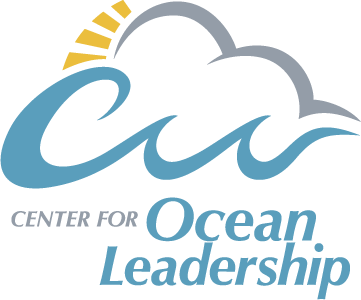Our Polar Seas
Resources

Plunging Into Our Polar Seas
The Earth’s polar regions are perhaps our planet’s most unique ecosystems – the Arctic dominated by floating sea ice and the Antarctic by ice sheets on the continent. The vast, isolated expanses of snow and ice, and the life which inhabits it, have fascinated mankind for ages. Yet much of the Arctic and Antarctic remain unexplored as they are characterized by extremely cold temperatures, heavy glaciation, and extreme variations in daylight hours (24 hours of daylight in the summer and complete darkness in mid-winter). Fascination may have been the impetus for polar research beginning in the late 1800s, but scientists now know that the Arctic and Antarctic are amongst the most vulnerable ecosystems in the world and need to be studied extensively as they hold the keys to understanding the Earth’s climate.
As the North and South Poles are the two coldest climatic regions on Earth, they play a vital role in regulating climate – acting as our planet’s cooling system. The global climate is controlled through a process called thermohaline circulation. As sea ice forms at the poles, the remaining salty, dense water sinks and is replaced by warmer, fresher surface water. This water movement creates the deep-ocean currents that move cold and warm water around the globe.
Unfortunately, the polar regions are currently at-risk due to continually increasing levels of anthropogenic carbon dioxide in the atmosphere. Carbon dioxide raises the global temperature by trapping heat that would otherwise escape directly into space – and the poles are warming at much faster rates than anywhere else on the globe. In the Arctic, sea ice cover is declining, as is the ratio of thick and thin ice cover. The amount of multi-year ice present in the Arctic has declined each year since the 1980’s due to warming temperatures, leaving mostly newer, thinner ice on the surface. The two lowest years on record (2012, 2020) for sea ice extent in the Arctic occurred in the past decade, and it is likely that the Arctic may have ice-free summers by the end of the 21st century. Warming temperatures in the Arctic may release even more carbon dioxide and other greenhouse gases, such as methane, by melting frozen soil called permafrost that keeps organic carbon in dead plants from decaying and delays its release into the atmosphere. This thawing may result in a positive feedback loop, in which thawing causes faster warming, which in turn causing more thawing. In the Antarctic, coastal glaciers are in retreat, land-based ice is shrinking, and ice melt is increasing as the South Pole has faced extreme warming over the last three decades. The increase in carbon dioxide is doing more than just raising temperatures. More carbon dioxide in the ocean causes it to become more acidic, negatively affecting small, shelled creatures, like pteropods, which are an important food sources for fish and larger animals.
Topics To Explore
Arctic
Antarctic
Webinar Series
View the NOSB’s polar-themed Professional Development Webinar Series recordings to learn more about the Arctic ecosystem and the formation and importance of sea ice.
2021 Professional Development Webinars: Dr. Melinda Webster
The 2019-2020 Multidisciplinary drifting Observatory for the Study of Arctic Climate (MOSAiC) expedition was a year-long drift experiment in the central Arctic with the goal of better understanding how the Arctic system works: how its ocean, sea ice, atmosphere and ecosystem interact with one another throughout an entire year. Sea ice geophysicist Melinda Webster was deployed to the field campaign during one of the most transformative times of the year, from spring to autumn. This period was rich with opportunities to study the seasonal evolution of the sea ice cover as it transitioned from a cold, snow-covered icescape to a fragmented ice pack riddled with melt ponds and drifting rapidly away from the North Pole. This presentation will explain the seasonal evolution of Arctic sea ice processes and properties, how they connect to the big picture of the Arctic system and climate change, and why the combination of field data, satellite measurements, and climate model experiments is one of the most powerful tools in science.
2021 Professional Development Webinars: Dr. Bonnie Light and Dr. Maddie Smith
Sea ice forms a frozen lid on much of the earth’s Polar oceans. The properties of this ice play a large role not only in the ocean, but also the global climate. In this presentation, we’ll introduce the unique and interesting features of sea ice, including its high reflectivity ("albedo"). We’ll introduce the ways we measure these properties in remote polar oceans and use these observations to improve computer climate models.
2021 Professional Development Webinars: Carolynn (Carrie) Harris
The sea ice that covers the Arctic Ocean is a haven for marine life in an extreme environment characterized by low temperatures and extreme seasonality. The seasonal patterns of ice melt and ice formation, as well as the loss of sea ice due to anthropogenic climate warming, affect life at all levels of the food chain.
More Places To Learn
Snow over Antarctica buffered sea level rise during last century (NASA Climate Change)
NASA Sees High Temperatures, Wildfires, Sea Ice Minimum Extent in Warming Arctic (NASA Goddard)
Marine Life in Antarctica (National History Museum, UK)
Antarctica | Exploring Oceans (National Geographic)
Researchers crack the ice to study the Arctic marine food web (National Science Foundation)
Biodiversity in the Deep Freeze: Antarctica (Exploring By The Seat Of Your Pants)
IPCC Special Report on the Ocean and Cryosphere in a Changing Climate (Chapter 3: Polar regions) (2019)
Arctic Marine Biodiversity: An Update of Species Richness and Examples of Biodiversity Change (2015)
Polar Bears from Space: Assessing Satellite Imagery as a Tool to Track Arctic Wildlife (2014)
A global population assessment of the Chinstrap penguin (Pygoscelis antarctica) (2020)
Arctic Ocean Microbial Community Structure before and after the 2007 Record Sea Ice Minimum (2011)

